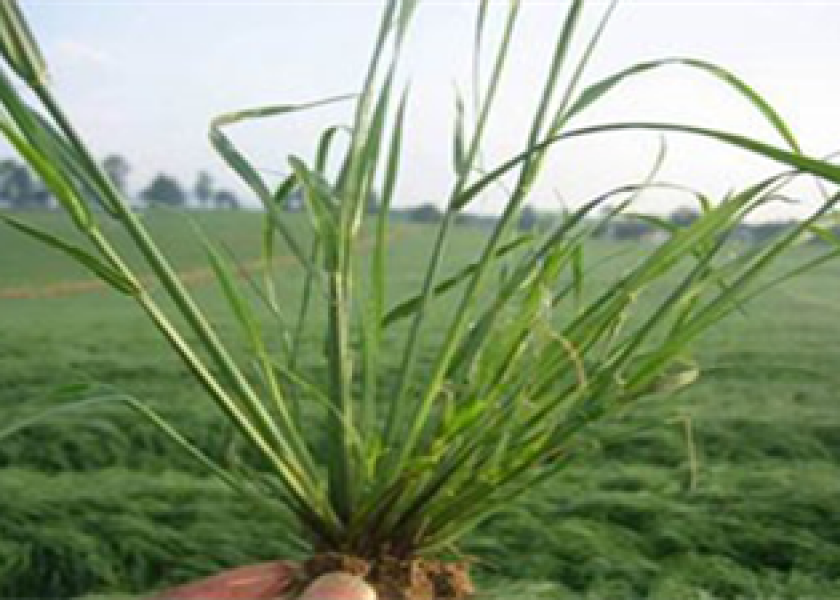Growing Teff Grass

Teff grass may be a good forage or cover crop option for producers.
By: Rutendo Nyamusamba, Agronomy-Crops Field Specialist, SDSU Extension
"Have you considered teff grass?" This is a growing response to those who are looking for more crop choices in their operations. In Western South Dakota the growing interest is linked to no-till systems and cover crops. Teff (Eragrotis tef), is native to Ethiopia in Africa where it is mainly grown for its grain used in making the staple, injera. Although there is an increasing market for its grain, teff is mainly a forage crop in the US.
Can I grow teff?
Most likely. Teff grows well in many environments and soil types. Teff is best sown when soils warm-up to 65oF followed by warmer growing temperatures of at least 80oF. Teff is very intolerant of cold temperatures and frost, with a reported 100% kill when temperatures dropped to below 32oF. A firm seedbed is important when sowing teff, with a shallow sowing depth of between 1/8 and ¼ inch. Seeding deeper than ½ inch has great potential of a stand failure. However, seeding this shallow can be a challenge. At Dakota Lakes Farm, teff is seeded deeper, packing the seed into the bottom of the trench and leaving the trench open. Surface seeding is possible if there is enough moisture Teff seed is small with a seed count of 1.14 million to 1.50 million un-coated seeds/lb. In 2013, at Dakota Lakes farm, seed was even smaller with a seed count of 1.8 million un-coated seeds/lb. Seeding rate of 4-8lbs/acre is the general recommendation. Teff produces many tillers (Picture 1). With favorable temperature and moisture, teff germination is rapid, taking 3 – 5 days. The 1st two weeks following germination are concentrated in establishing the roots hence the need to think about weed competition at crop establishment.
According to teff research results at SDSU, summarized in the Extension Extra (ExEx 8071) entitled, "Teff: A new annual forage grass for South Dakota?", teff can be seeded from late May to July. Optimum production was achieved in late May planting where 1st cutting was done in early August and a second harvest mid-September or can be grazed. Because of its shallow root system, it is recommended that grazing be done on re-growing teff after the 2nd cutting. Grazing before the 1st cutting might result in animals pulling plants out of the ground. A 1st cutting height of 3 – 4 inches gives better regrowth as it allows blade to remain for photosynthesis. Trials at SDSU yielded 1.3 to 5.3 tons/acre of biomass. There has not been many concerns with disease and insect problems. However, a stem-boring wasp caused significant damage and stunting of growth in one year of the trials conducted by SDSU at Highmore and Brookings.
What are other possible uses/ reasons to plant teff?
- As an emergency forage or rescue crop
- To supplement hay during the ‘summer slump’ months
- For double cropping following cereal grain like wheat
- As a rotational crop following alfalfa
- As a green manure crop
- For soil erosion control
- To make use of field corners for those with center pivots
- To extend production months of an old alfalfa stand







